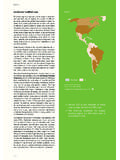Transcription of Poultry housing and management in developing …
1 Food and Agriculture Organization of the United Nations Poultry Development Review Poultry housing and management in developing countries Phil Glatz, Pig and Poultry Production Institute, SARDI, Roseworthy 5371, South Australia, Australia Robert Pym, School of Veterinary Science, University of Queensland, Gatton, 4343, Queensland, Australia Poultry housing Medium-scale commercial: In developing countries , most medi- Improvements to Poultry housing systems in developing countries um-scale commercial layer and chicken meat houses rely on natu- have focused on providing an environment that satisfies the birds' ral airflow through the shed for ventilation (Daghir, 2001). Where thermal requirements. Newly hatched birds have a poor ability to required, meat birds and layers are given radiant heating early in control body temperature, and require some form of supplemen- their lives, to maintain body temperature. Laying hens may be kept tary heating, particularly in the first few days after hatch.
2 Many in commercial wire cages in open sheds, or in sheds with wire developing countries are located in tropical areas where minimal sides to exclude wild birds, scavenging Poultry and predators. heating is required. Indeed, the emphasis in these countries par- ticularly for meat chickens is on keeping the birds cool. Small-scale commercial (improved genotype stock and supple- mentary feeding): Houses of various shapes and dimensions are Production systems typically constructed using local building materials consisting of International Poultry breeding and feed companies operate in timber or mud bricks and bamboo. These small-scale commercial many developing countries and have established large-scale com- facilities may have several rooms or compartments where chicks mercial farms in a significant number of them. The housing and are brooded, pullets are reared and layers are housed in a floor- equipment used make it possible to exert considerable control based system or in cages.
3 Meat birds are often kept in single-age over the climate provided to the birds, but such houses are expen- groups of 50 to 100 chickens within the house. The house can sive to build and operate, and require a large turnover of birds to make them viable. Owing to the lower construction and running costs, medium- and small-scale commercial housing is popular in developing countries . By far the most prevalent Poultry farming system in many developing countries is the small-scale scavenging system, which usually involves only very basic (if any) shelter for housing birds. Large-scale commercial farms: Commercial houses in developing countries are clear-span structures with litter on the floor for meat birds or cages for laying hens. The commercial chicken meat in- dustry in some developing countries is vertically integrated, with single companies owning feed mills, breeder farms, hatcheries and processing plants. Arrangements typically involve agree- ments in which the farmer or landowner provides the housing , equipment and labour, while the company provides the chicks, feed, medication, transport and supervision.
4 For controlled-environment housing of layers, multi-tier cage systems are common. Most large-scale commercial farms use controlled-environment systems to provide the ideal thermal envi- ronment for the birds (Glatz and Bolla, 2004). Birds' performance in controlled-environment sheds is generally superior to that in naturally ventilated houses, as the conditions can be maintained in the birds' thermal comfort zone. Achieving the ideal environ- ment for birds depends on appropriate management of the poul- try house. Photo Credit: I. Aini Modern houses are fully automated, with fans linked to sen- sors to maintain the required environment. Some commercial op- erators use computerized systems for the remote checking and changing of settings in houses. Forced-air furnaces and radiant heating are the main methods of providing heat to young chicks. Sector 1 large-scale broiler operations 1. Poultry Development Review Poultry housing and management in developing countries Photo Credit: Olaf Thieme Photo Credit: I.
5 Aini Sector 2 medium-scale layer and broiler operations Photo Credit: Karma Nidup Photo Credit: Karma Nidup Sector 3 small-scale commercial houses be used as night shelter for birds that forage under free-range 2009). If no special structure is provided, the birds sometimes conditions or that are confined to an outdoor pen during the day. shelter overnight under the farmer's house or even inside the house with the family. Where provided, the usually rudimentary Small-scale semi-scavenging system using indigenous birds: house comprises posts, a thatch or scrap iron roof, and thatch When provided, shelters are made from various materials, includ- or scrap wire netting walls. Feeders, perches, drinkers and nest ing wood and leaf material from local trees or shrubs. Birds in the boxes made from local materials are sometimes provided, and household flock are typically housed overnight in the shelter, and special shelters of a wide variety of designs and constructions are are let out in the morning to forage during the day (Ahlers et al.
6 , sometimes used to house broody hens with their chicks. Photo Credit: Viengsavanh Phimphachanhvongsod Photo Credit: Viengsavanh Phimphachanhvongsod Sector 4 small-scale, semi-scavenging Poultry production 2. Poultry Development Review Poultry housing and management in developing countries Ventilation management Fogging systems: Fogging systems are sometimes used to reduce All Poultry houses need some form of ventilation to ensure an the shed temperature. Fogging works best in dry climates, and adequate supply of oxygen, while removing carbon dioxide, other usually involves several rows of high-pressure nozzles that release waste gases and dust. In commercial operations, minimum ven- a fine mist throughout the house. The cooling effect is signifi- tilation is often practised in colder climates, but not generally in cantly increased by airflow from the use of fans within the shed. tropical ones (Glatz and Bolla, 2004). Natural ventilation is common in medium- and small-scale op- In large-scale automated operations, correct air distribution can erations and in areas where the climatic conditions are similar to be achieved using a negative pressure ventilation system.
7 When the temperatures required by birds. Ventilation is usually provided chicks are very young, or in colder climates, the air from the inlets by prevailing breezes. Natural ventilation works best in Poultry should be directed towards the roof, to mix with the warm air sheds where the long axis runs east to west, to avoid heating of there and circulate throughout the shed. With older birds and in the sidewalls by the sun during the morning and afternoon. warmer temperatures, the incoming air is directed down towards the birds, and helps to keep them cool. Evaporative cooling pads Poultry management can be placed in the air inlets to keep birds cool in hot weather. The aim of management is to provide the conditions that en- Tunnel ventilation is the most effective ventilation system for large sure optimum performance of the birds (Bell and Weaver, 2001). houses in hot weather. Given reasonable conditions, broody hens are very successful at Tunnel ventilation: These systems are popular in hot climates.
8 Ex- hatching their chicks, but good hatchability using artificial incuba- haust fans are placed at one end of the house or in the middle tion (both large and small) relies on careful management of tem- of the shed, and air is drawn through the length of the house, perature, humidity, ventilation, position and egg turning. During removing heat, moisture and dust. Evaporative cooling pads are incubation, the egg loses water vapour through its shell. The rate located at the air inlets. The energy released during evapora- of water loss depends on both the shell structure and the humid- tion reduces the air temperature, and the resulting airflow cre- ity of the air surrounding the egg. The quality of the hatch also ates a cooling effect, which can reduce the shed temperature by depends on the age and health of the breeder flock, and on the 10 C or more, depending on humidity. Maximum evaporation is evenness and cleanliness of the eggs set. achieved when water pumps are set to provide enough pad mois- ture to ensure optimum water evaporation.
9 If too much water is Factors involved in Poultry management added to the pads, it is likely to lead to higher relative humidity Poultry management involves monitoring Poultry health; ensur- and temperatures in the shed. ing that the Poultry house is maintained with appropriate brood- ing, rearing, growing and laying conditions; and ensuring that recommended vaccinations are given and appropriate feeding programmes are used. In developing countries , it is often difficult to achieve optimum performance from birds, owing to less-than- optimal housing conditions and lack of quality feed, vaccines and trained staff. Breed effects Owing to their superior production, commercial hybrids of high Photo Credit: Robert Pym genetic merit are often used in developing countries , but are not well-suited to tropical environments (see Poultry Development Review on Poultry genetics and breeding in developing countries ). These birds are sensitive to changes in the diet and to high am- bient temperature, and require skilled stockpersons to manage them.
10 Indigenous Poultry can cope better with the harsh condi- tions often prevailing in developing countries , and good man- agement will improve their performance. This can be achieved by using good housing , protecting the birds from predators, and providing them with the environmental conditions that allow them to achieve maximum profitability. Temperature effects Farmers need to compensate for undesirable climatic conditions by manipulating control systems or modifying the house to en- Photo Credit: Robert Pym sure that the welfare and environmental needs of the birds are satisfied. Environmental extremes (heat and cold stress, excessive or inadequate ventilation, poor air quality) can be managed if the design of the Poultry house is appropriate for the conditions. Birds require adequate space, sufficient feed to meet their nu- Tunnel-ventilated broiler house: exterior and interior views tritional requirements, and an adequate supply of good-quality 3. Poultry Development Review Poultry housing and management in developing countries water.
















